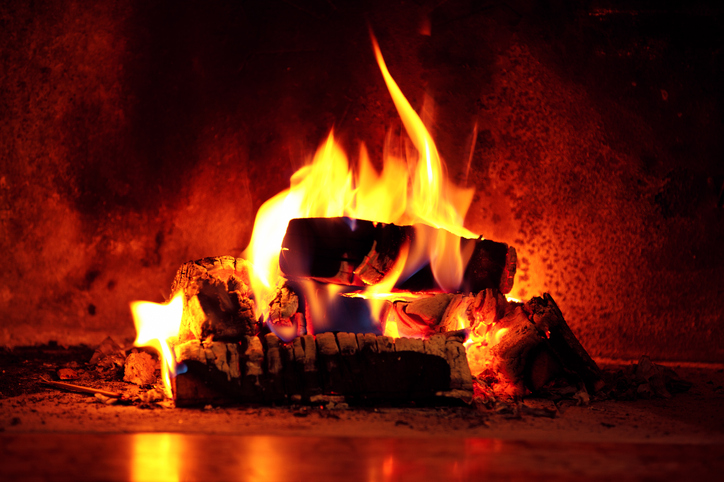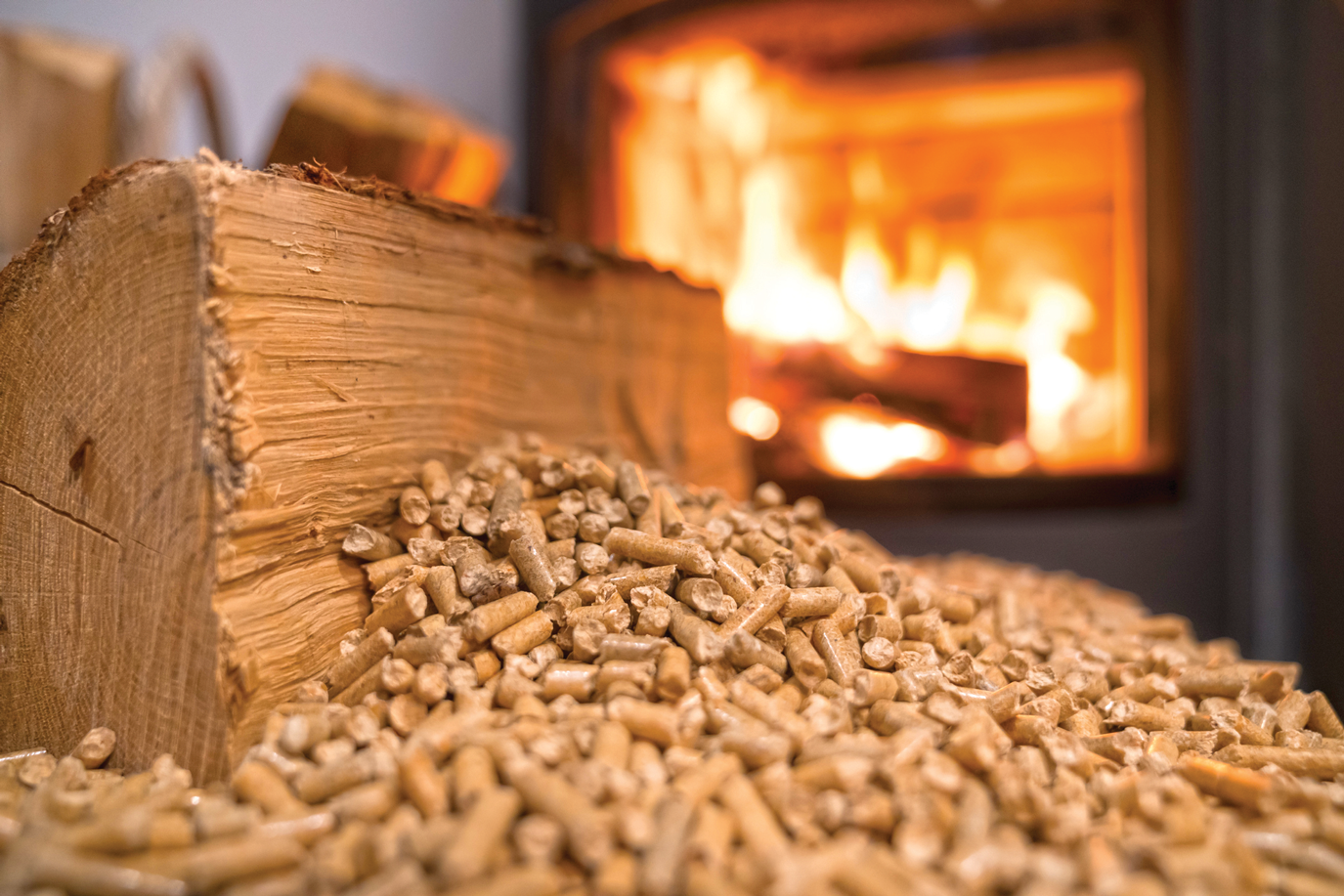Brisk fall evenings are perfect for cuddling up in front of a wood stove, reading a book and sipping a cup of hot cocoa. The crackling of a wood fire draws people like moths. Our love affair with wood fires goes back to when the humans first discovered fire and depended on it for warmth, cooking and protection. That allure has only grown over the centuries.
Wood stoves, perhaps our favorite appliance for heating home and body, provide what is referred to as “bone heat,” warmth that goes deep down into our bodies. As a result, homes are often comfortable at 65 degrees. Gas and electric heat, by contrast, are surface heats and at 70 degrees a sweater can still be necessary. Wood stoves come in a variety of sizes that will fit into any home setting. They are also one of the least expensive ways to heat your home during the cold months.
At the same time, Klamath is subject to atmospheric conditions called “inversions” that can cause our air to become smoky in the winter. An inversion occurs when a layer of cold air near the ground gets trapped under a layer of warm air. Inversions traps wood smoke and other air pollutants that would normally disperse. This can cause the air we breathe to become unusually smoky, making it unpleasant for everyday residents and potentially unhealthy for those with breathing problems such as asthma. Klamath Falls is located in a structural basin, with calm winter winds and cold, clear evenings. Snow on the ground slows surface heating, while mountain ranges surrounding the Klamath Basin prevent inversions from clearing. The overuse of dirty wood stoves can cause our winter air to become smokier than we would like.
But there’s more to clean burning than just making our air more pleasant to breath. Environmental Protection Agency (EPA) regulations govern the amount of particulate matter allowed in the air. When air quality is below EPA standards – and in Klamath, it currently is – that can make it difficult or impossible for businesses to open in Klamath if they create any emissions of their own. That’s why keeping our winter air clear isn’t just for health reasons, it’s also a way of helping our local economy.
Air quality season begins in Klamath County October 15 and continues through March 31. Depending on each day’s air quality, wood stove use may be fully allowed, limited, or prohibited. To find the day’s burn status call 541-884-BURN (3876) or call the Health Department (541-883-1122). Reader boards at the Klamath County Fairgrounds and in Keno post air quality and burn advisories. You can also check the burn flags flying at all Klamath Falls elementary schools, Klamath Union High School and two county schools, Henley and Ferguson. Green flags mean okay to burn. Yellow flags mean some restrictions, and red flags are high alert. Learn your colors and burn responsibly.
Burning clean can begin with simple steps, such as seasoning wood for at least six months before use and storing it off the ground with a cover to protect it from moisture. That’s because burning wet wood is a waste of energy. When a tree is alive half the weight of the wood can be water. But wood burns most efficiently when the moisture content is between 15 and 20 percent. Too much water in the wood reduces the temperature in the stove, preventing the wood from completely burning. Incomplete combustion results in smoke going up the chimney and creates creosote, which is a fire hazard. The smoke can also negatively impact the air quality inside and outside your home.

Start fires with newspaper, dry kindling, or all-natural fire starters. And be sure to sweep your chimney annually,” reminds K.C. of Orley’s of Klamath Falls, 2120 Washburn Way.
The saying goes that a wood fire heats you twice. Once when you chop the wood and again when you burn it. Permits to cut firewood on public land are required. Dates and prices vary, and permits are issued on a first-come, first-served basis. For a permit and information about safe burning contact the U.S. Forest Service, Klamath Ranger District, at 2819 Dahlia Street (541-883-6714) or the Bureau of Land Management in Southtowne, 2795 Anderson Avenue (541-883-6916). Each agency has its own regulations so know where you want to cut wood and check with the correct office.
If chopping your own wood isn’t your thing, there are local providers who will do the work for you. Cords of wood can be purchased by the truckload. Signs and trailers of wood can be spotted along S. 6th Street and Washburn Way. Pam Ruddock of South Central Oregon Economic Development District ran the area’s Klamath Clean Air project. She suggests that if you purchase wood from a vendor, make sure you also purchase a moisture meter to make sure you’re buying dry wood. You can find one at any business that sells wood burning products, such as Coastal, Orley’s, or Diamond Home Improvement.
But sometimes those steps aren’t enough and we need to upgrade our wood burning equipment. One step is to move to an EPA certified low-emission wood stove. These certified stoves pollute less than ordinary stoves and are allowed to burn on “yellow” days during which ordinary dirtier stove use is prohibited. Or you can take the next step and move to wood pellet stoves, which are more efficient and cleaner than wood stoves. Pellet stoves are also semi-automated, allowing them to run longer before adding more fuel. And because pellet stoves burn hotter than ordinary wood stoves, you don’t need to clean the ash as often.
Pam Ruddock says, “Air quality will always be a worry here because we live in this bowl, which encourages inversions that can trap smoky air. But we’ve made great strides educating people how to burn to correctly, so that the output of ash is a lot lower.”
All in all, nothing beats the comfort of basking in the warmth of a wood stove on a cold day, and it’s even better if we burn the right wood, the right way, in the right appliance.
By Sally-Ann Palcovich






